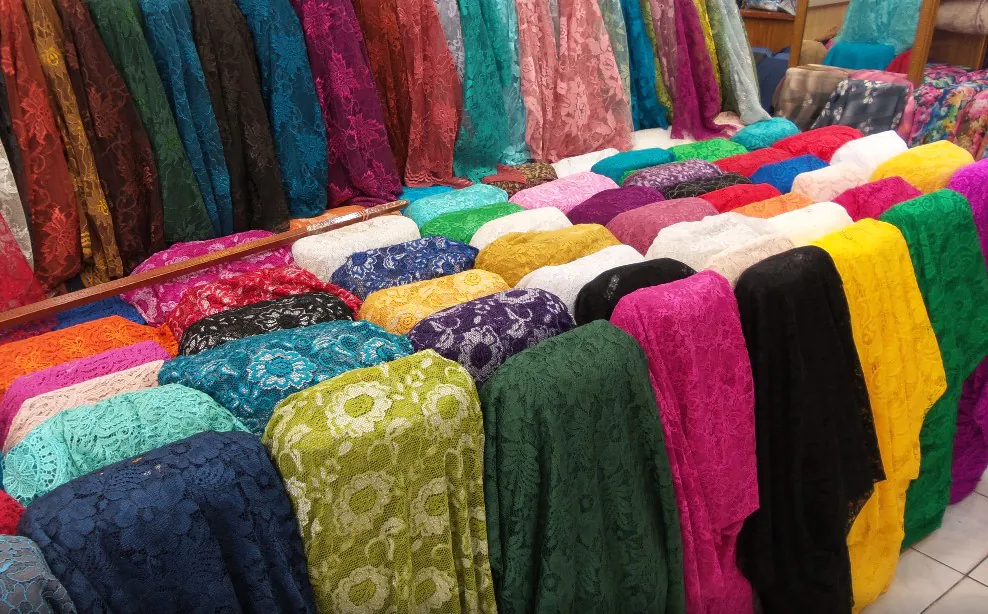The fashion industry is on the cusp of a technological revolution, and at the heart of this transformation are smart textiles. These innovative materials have the potential to redefine the way we interact with our clothing, offering enhanced functionality, comfort, and sustainability. In this article, we explore the current state of smart textiles in fashion and take a glimpse into their promising future.
What are smart textiles and how are they different from traditional textiles?
Smart textiles, sometimes referred to as “e-textiles” or “intelligent textiles,” are materials that have been engineered to include electronic components, sensors, or other advanced capabilities. Unlike traditional textiles, smart textiles are able to interact with their environment, respond to stimuli, and even communicate with the wearer or other devices.
For example, consider a garment made from a fabric treatment that reacts to temperature changes. This material can adjust its thermal properties to keep the wearer warm or cool, depending on the external conditions.
How are smart textiles currently being used in the fashion industry?
Smart textiles have already made their mark on the fashion industry, with several exciting applications:
- Wearable technology: From fitness trackers to smartwatches, wearable tech is becoming increasingly popular. Smart textiles can be used to create comfortable, unobtrusive wearable devices that integrate seamlessly with the wearer’s clothing.
- Athletic wear: Smart textiles can provide athletes with real-time feedback on their performance by monitoring vital signs, tracking movement, and even offering guidance on technique.
- Adaptive clothing: By using smart textiles that respond to environmental factors such as light, temperature, or moisture, designers can create clothing that adapts to the wearer’s needs, providing optimal comfort and protection.
- Safety and protection: Smart textiles can be used to create clothing with built-in safety features, such as materials that change color in response to harmful chemicals, or garments that emit a signal when the wearer is in danger.
What are some benefits of incorporating smart textiles in fashion designs?
The benefits of using smart textiles in fashion are vast and include:
- Enhanced functionality: Smart textiles can offer a range of added features, such as temperature regulation, moisture-wicking, and UV protection.
- Personalization: With the ability to respond to the wearer’s needs, smart textiles can provide a more personalized and comfortable experience.
- Safety: As mentioned earlier, smart textiles can be used to create garments with safety features that help protect the wearer from various hazards.
- Fashion-forward: Incorporating smart textiles can elevate a designer’s work, providing a cutting-edge look and feel to their collections.
How do smart textiles impact sustainability in the fashion industry?
Sustainability is a growing concern in the fashion industry, and smart textiles can play a role in reducing the industry’s environmental impact. For instance, absorbent fabric manufacturers are developing materials that can effectively manage moisture, reducing the need for frequent washing and prolonging the life of garments.
Additionally, by incorporating advanced technologies such as energy harvesting, smart textiles can help reduce the reliance on traditional power sources, leading to lower carbon emissions.
How can fashion designers and brands incorporate smart textiles into their collections while maintaining their aesthetic and brand identity?
The key to successfully integrating smart textiles into a fashion collection is to strike the right balance between aesthetics, functionality, and brand identity. Designers can work closely with commercial textile manufacturers to source materials that align with their brand’s vision while providing the desired technological features.
Collaborations between fashion designers and tech companies can also prove fruitful, as this allows for the development of custom smart textiles tailored to the specific needs of a collection.
What is the future of smart textiles in fashion and how will they continue to shape the industry?
The future of smart textiles in fashion is full of possibilities, and as technology continues to advance, we can expect to see even more innovative applications emerge. Some potential developments include:
- Self-repairing materials: Imagine a fabric that can repair itself when damaged, significantly extending the life of a garment and reducing waste.
- Energy-generating textiles: Fabrics that can harness solar energy or capture energy from the wearer’s movements could be used to power wearable devices or even charge smartphones.
- Smart textiles as a communication tool: With the ability to send and receive data, smart textiles could enable new ways of communication, such as garments that change color based on the wearer’s mood or clothing that displays messages from social media feeds.
How can smart textiles be used to enhance functionality, comfort, and safety in fashion designs?
Smart textiles offer numerous opportunities to improve the functionality, comfort, and safety of fashion designs:
- Functionality: As previously discussed, smart textiles can be used to create garments that adapt to the wearer’s needs, providing optimal comfort and protection. This could include materials that change their properties in response to temperature, humidity, or light levels.
- Comfort: Smart textiles can improve comfort by offering moisture-wicking properties, temperature regulation, and even built-in massaging features that can help to alleviate muscle tension.
- Safety: By incorporating safety features such as materials that change color in response to harmful chemicals, or garments that emit a signal when the wearer is in danger, smart textiles can help to protect users from various hazards.
In conclusion, the future of smart textiles in fashion is an exciting and promising one, with the potential to revolutionize the way we interact with our clothing. As technology continues to advance and new applications emerge, the marriage of fashion and technology will only become more integral to our everyday lives.



